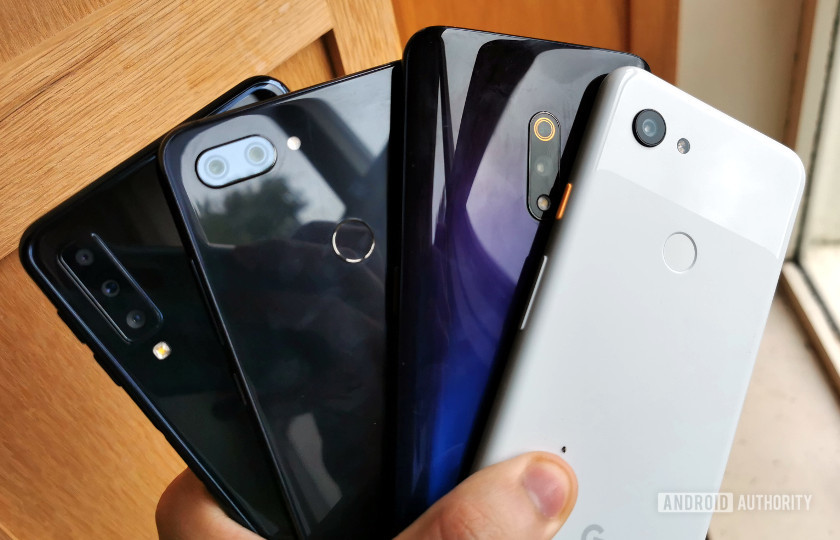Here’s why I think the refresh rate wars are dumb
![]()
For many smartphone enthusiasts, specs are everything. Benchmarks and performance are constantly compared, discussed or argued over.
So, it should come as no surprise that the newest spec that has seen major changes — screen refresh rate — is the latest battleground for both manufacturers and Android diehards.
We’ve seen high refresh rate display phones from OnePlus, Google, Oppo, Asus, and more are expected to hit shelves this year.
But are 90 and 120Hz refresh rates more than a marketing ploy?
What is a refresh rate?
Before we begin, a quick explanation. Refresh rates correspond to how many frames (images) per second a screen is able to display. 60Hz screens display 60 frames per second, 90Hz screens show 90 frames per second, and so on. Until recently, 60Hz was the standard for most smartphones. Things changed when gaming phones entered the scene, but they weren’t fully responsible for popularizing the new feature. No, the culprits were the OnePlus 7 Pro and the Pixel 4, both featuring 90Hz displays. Many manufacturers have followed their example, with a number of Android devices now featuring the faster and smoother screens. But the race to have the highest refresh rate looks like yet another manufacturer tactic to have the best specs on paper.
It is easy to argue that high refresh rates are not necessary for the average consumer. My colleague Ryan’s video certainly demonstrated that most people cannot tell the difference between 60Hz and 90Hz at a glance. But many smartphone features aren’t terribly practical — they exist because people want to buy phones that have them. Many people don’t take advantage of the variety of lenses many smartphone cameras come with, for example, but they are a selling point regardless. So, we will move on to better and more compelling arguments against the refresh rate wars.
The drawbacks of 90Hz and 120Hz displays
![]()
First, we can’t deny that a higher refresh rate improves the overall visual experience. Anyone who has made the switch from a 60Hz PC monitor to 144Hz or higher can attest that there is no going back. Once you get acclimated to the smoother visuals the new monitor offers, everything else feels sluggish. Movement is less blurry and you get a competitive edge when playing games too. Yet, on a smartphone, which unlike a monitor isn’t constantly plugged in, there are many more drawbacks.
The first and most glaring one is battery consumption. Higher refresh rates require more processing power, which drains your battery faster. The difference is noticeable even on 90Hz displays, as we demonstrated in our test on the OnePlus 7 Pro. With a 1080p resolution and 60Hz, the device managed 692 minutes of web browsing. Switching to 90Hz with the same resolution resulted in almost 200 fewer minutes of browsing time. This inevitably leads to the question of whether the tradeoff is worth it. On devices like the Pixel 4, which has a 2,800mAh battery, the answer is decidedly no (though it’s arguable on the Pixel 4 XL). But other devices are not immune either. OnePlus has already promised 120Hz displays for the upcoming OnePlus 8 devices, but the rush for ever higher refresh rates seems premature.
Where are the compatible apps and games?
Another factor to consider is that not all apps are compatible with 90Hz refresh rates. This means that no matter what settings you select, your frames per second (fps) will drop back to 60 when switching between compatible and incompatible applications, causing flickering. (On some devices you can use workarounds to force 90Hz, but this can cause problems.) It was the main reason refresh rate was tied to brightness on the Pixel 4 phones — flickering is less visible when higher brightness is enabled.
Even gaming is not a terribly solid argument in favor of high refresh rates on current smartphones. At the moment the vast majority of mobile games can’t handle high frame rates. Many are capped at 30 or 60fps. This includes favorites like PUBG Mobile, although support for 90Hz is expected to arrive at some point this year. Asphalt 9 is another popular title is capped at 30 frames per second. There are exceptions that are 120Hz-enabled, but the number is simply not big enough to entice most people.

It’s also important to note that high resolution combined with high and stable fps requires beefy specs and proper cooling. Add the price of the 90Hz display into the equation and you’re looking at quite the steep overall price. The only relatively affordable device that fulfills these requirements at the moment is the Realme X2 Pro, which has a starting price of €399 in Europe.
So, with all of this in mind, is losing hours of screen-on time really worth it for smoother scrolling and a better experience in a small number of apps and games? We are sure that for some people the answer will still be yes, but for the vast majority of users the tradeoffs are simply not worth it. As the tech matures and batteries and specs become better, higher frame rate displays will be a great feature. Until then, the rush for ever higher refresh rates is yet another spec war used by manufacturers to drum up more attention for their smartphones.
from Android Authority https://ift.tt/2O05aM9


Post a Comment